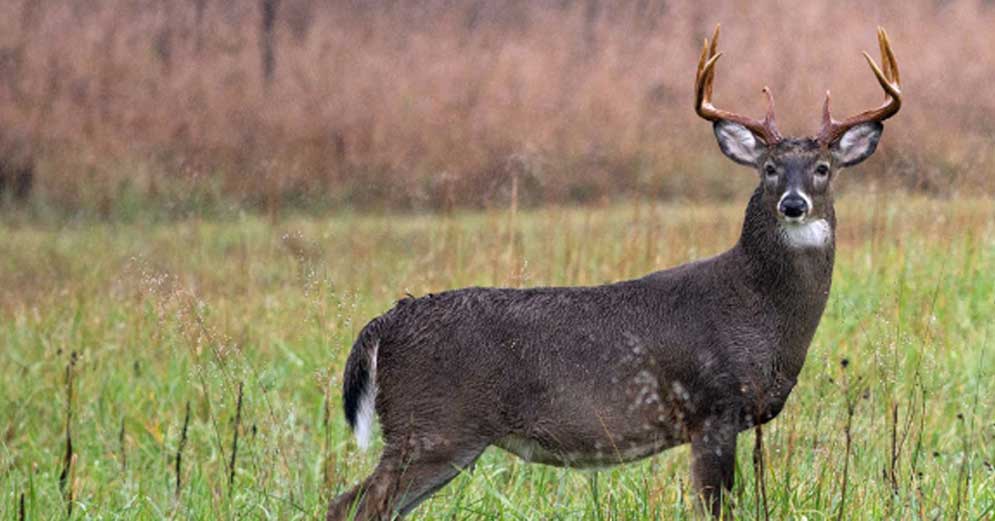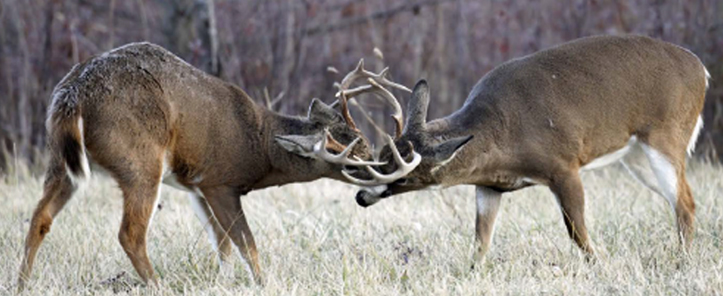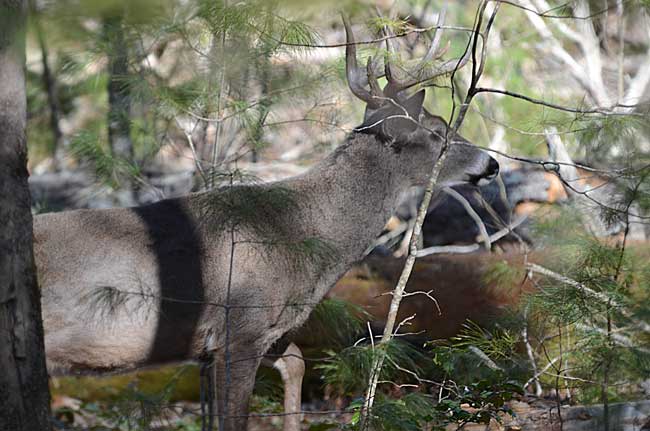Keri Butt

Many years ago, long before camo was cool and technology took the hunting community by storm, I can recall watching a video where the hosts were discussing how get rid of “inferior antler genetics.” The process, known as “selective culling,” seemed simple. The gist of the theory was that if a buck’s antlers were small with undesirable characteristics, the buck should be selectively removed from the herd, preventing him from passing his lackluster antler genetics on to future generations.
Frankly, the idea sounded a bit illogical; but then, I’ve always been of the mindset that ultimately, there’s a much larger force residing over nature, and while it can be cruel, it is also purposeful. The advances in technology and social media have introduced many positive changes for the hunting community. However, from my vantage point, there have also been causes for concern.
In some circles, antlers have nearly become the sole focus of hunting, prompting some wildlife managers to take inventory of their own methods and compare them to that of media personalities. However, what the average hunter often fails to realize, is that there are a ton of experts out there. Not only do hunters often set their personal goals according to these “expert’s” advice, but they forge head-on into practices that may do more harm than good. The difficulty is deciphering between which ones are qualified to hold “expert status” and which ones are self-appointed.
Can we outwit Mother Nature?
Good intentions aside, will our attempts to manipulate DNA for personal gain by targeting specific bucks have negative implications? What makes us think that we can throw natural selection aside? Perhaps, the perception alone makes us believe that we’re being proactive in the namesake of “herd health.” Why else would we throw the term “buck management” around like a handful of loose change?
Almighty DNA
DNA is a powerful entity. It’s a web of intricately detailed labyrinths that are responsible for assigning unique traits and characteristics to every living thing. But, the science that encompasses DNA is insanely complex, and virtually impossible for the laymen to understand in its full capacity. Perhaps it’s this lack of comprehension that has led us to believe that we are capable of bypassing the authority of genetics.
At a glance, the prospect of selective culling appears clever. A buck whose antlers aren’t “wall worthy” should be removed. After all, the reason a buck presents poor antler quality must be at the hands of imperfect genetics, right? This will tidy up the gene pool, paving the way for bucks with superior antler attributes to do the breeding.
However, we’re talking about wild, free-range deer, and in those populations, the only entity that culling can eliminate or modify is balance.
The truth is that there is nothing precise surrounding the methodology behind selective culling to improve genetically driven antler potential. More is unknown than there is absolute, and there is a plethora of studies that explain why it’s an impossible feat.
Dr. Steve Ditchkoff, Professor at the School of Forestry and Wildlife Sciences at Auburn University, says that using genetics and management in the same sentence is misleading because 99.9% of the land we manage for deer has no impact on genetics. Only different genetics can be achieved.
“It’s easy to believe that we are influencing genetics through selective harvest, but there are many factors that wildlife managers fail to consider,” said Ditchkoff. “You cannot affect genetics as a hunter, and you cannot influence genetics through selective culling in wild deer populations.”
“Sometimes, folks tend to take information they’ve seen and heard, and make up their own set of rules. The problem with this is that sometimes TV personalities give a lack of understanding to the perceptions they put out to the public,” added Ditchkoff.
He got it from his Mama
One of the most overlooked facets when it comes to judging the quality of a buck’s rack is the role of the doe. Not only does the mother influence her offspring’s antlers environmentally, but she contributes to them genetically as well. Believe it or not, a doe can have an even greater genetic impact on her son’s antlers than the sire.
According to Ditchkoff, antlers are genetically determined, but environmentally influenced. While genetic distribution is a combined input from both parents, when it comes to environmental persuasions, the doe bears most, if not all, the responsibility. There are several key environmental pressures that can compromise a buck’s antler growth. Some begin in fetal development.
Proper nutrition for all deer is by far the most basic, yet crucial environmental additive. With it, a buck’s antler potential can soar. Without it, antler quality will suffer. The importance of a doe receiving and providing, adequate nutrition for herself and her fawns is critical. Great genetics mean nothing if wellbeing is compromised.
There are a number of events that can prevent a doe from acquiring sufficient sustenance during pregnancy and beyond. A brutal winter or late spring, especially in the northern regions, can wreak havoc on a pregnant doe’s physical condition. During the last few months of pregnancy, fetal growth increases rapidly, requiring a higher caloric intake from a nutritionally sound diet. When a doe’s nutritional requirements aren’t met, neither are her fawns. Disease, age, and other anomalies can also leave a harmful impression on a doe’s physical condition that can transfer to, and are equally harmful to, her unborn fawns. Low birth weight and other health problems can result.
After fawns are born, it’s possible that deficiencies endured while in the womb, won’t end there. At the very least, it sets them up for a rough start to life. Improper nutrition can cause a lactating doe’s milk production to be low, as well as nutritionally deficient. For a buck fawn, regardless how impressive his genetics are, when his nutritional needs aren’t being met, this paints a discouraging outlook for future antler development.
With that said, nature has a way of righting itself. When inopportune environmental circumstances inflict shortcomings early in the antler development, with optimal conditions, extraordinary genetics may shine once again in all their brilliance. Of course, this is if he isn’t culled as a 1.5-year-old spike because someone mistakenly forgot to consider outside probabilities. In the name of “buck management,” the buck of a lifetime, and his genetics may have unknowingly been eliminated.
The reverse is also true. When you consider the growth cycle of antlers, it’s nothing short of amazing the amount of development that occurs in a matter of only 4 months. To achieve optimal antler development, a buck requires a generous supply of nutrient rich sustenance. During the spring and summer, when food plots are lush and agricultural crops are in full swing, bucks typically have no problem attaining adequate nutrition. A young buck may have lived in a prime environment, but an extreme circumstance like the drought of 2012, which plagued most of the country, can have a damaging impact on a buck’s antler development.
When something catastrophic results in distress to overall health, nature compensates by putting survival at the epicenter of importance, thus forcing antler development into the back seat. As a 3-year-old, due to a negative outside influence, what began as great potential suddenly takes a sharp turn towards inferior. However, when a buck produces antlers well below his potential because of environmental blows, the buck is often eradicated from the herd because he was believed to be inferior. And with it goes his contribution to the gene pool. His antlers might have appeared mediocre because of outside factors, but genetics that were unobservable dictated otherwise.

The Unequal Equalities of Genetics
The male is solely responsible for determining the sex of his offspring. But everything else, genetically speaking, an individual’s DNA, is a product of equal components inherited from both parents. This means that regardless of gender, bucks and does receive and contribute to antler coding material. Doe fawns also receive equal portions of antler coding DNA from each parent. Buck fawns, however, will typically receive more from one parent or the other.
Professor Steve Ditchkoff says that one chromosome typically weighs more and is longer than the other. If the larger chromosome that codes for antler traits belongs to the mother, at conception, her son will inherit more antler coding material from her than the father.
“There’s an inability to judge a doe’s genetic potential for large antlers in the wild, and there’s no way to control breeding, so it’s insensible to assume a buck’s antler traits only come from the sire,” he said.
Further, in instances when the antler coding material that resides on a larger chromosome produces less desirable antler qualities, this doesn’t mean that a buck’s DNA doesn’t harbor genes that will produce a more favorable outcome in his future offspring. Since we can’t regulate or determine breeding probabilities in wild deer, it’s impossible to predict the interaction based product of both parent’s DNA.
The “Other” Genetics
According to Ditchkoff, there are other genetics that have nothing to do with antlers. For example, the immune system doesn’t code for antlers, but deflects pathogenic challenges which affect antler characteristics. While the science is multifaceted, pathogenic impairments can begin on a cellular level.
Many diseases, like Chronic Wasting Disease (CWD), for example, can be transmitted through birth matter. So, if a doe is the carrier of CWD or another disease that can be transferred via placenta, then it’s likely she will transmit the responsible pathogen to her offspring either in-utero or through environmental contamination after birth. A disease causing pathogen of any magnitude can be a hindrance on antler development and quality and length of life. This is just another example of how environmental influences can overshadow genetics.
Tumors, injuries, and cranial abscesses are also examples of environmental influences that have no bearing on genetics, but can negatively impact a buck’s rack. A buck may have otherwise donned the antlers of a super star; but if his rack no longer outwardly reflects optimal genetics, he may be targeted. This reiterates that by not considering the environmental dynamic, a superior buck and his DNA, could be eliminated.
The Spike Debate
It used to be a widespread notion (and still is sometimes) that if a one-year-old buck presents spikes or forked antlers, then bad genetics must have made him that way. Therefore, to keep these unpleasing traits from impeding the next generation of bucks, he becomes a cull buck. However, a multitude of prolific studies have concluded that this theory is incorrect.
In a 5-year study, conducted by Mickey W. Hellickson, PH.D., and Chief Wildlife Biologist at the King Ranch in south Texas, Hellickson noted that selective breeding experiments with penned deer have documented rapid improvement in antler quality. However, this particular study set out to determine if the same was possible in free ranging deer populations.
The study took place on a 9,500-acre enclosure with treatment and control areas. Both areas were hunted. Additionally, the treatment area underwent rigorous culling of 1.5-year-old bucks with fewer than six antler points, and 2.5-year-old bucks with less than nine antler points. The areas were monitored by helicopter and spotlight surveys as well as live capture surveys.
The results ended with 165 bucks culled from the treatment area and 106 bucks culled from the control area. The percentage of bucks that qualified as cull bucks never changed over the course of the study.
Hellickson concluded that despite intensive culling practices, that were specifically designed to eliminate inferior antler traits, in five years, the antler quality in the 1.5-year-old and 2.5-year-old “cull bucks” never wavered.
A buck must be allowed to live long enough so their skeletal system has finished growing. For their first two to three years, priority is given to skeletal development. A buck must be allowed to make it to at least three years old before you can begin to make an honest assessment of antler growing potential.
The Heritability Clause
Heritability lends an important aspect siding with the mindset that we can’t alter antler genetics in wild deer through culling. For an offspring to receive and exhibit a trait from its parents, the trait must be heritable - meaning that the variations of a specific and observable trait can be attributed to genetic components rather than environmental ones.
Genotype refers to the genetic makeup of an inheritable trait an offspring receives from its parents, like height or eye color (in humans). A genotype may or may not be an expression of what you can physically observe. Phenotype, on the other side describes an observable, physical expression of a genotype. A phenotype can reflect a conflict between nature and nurture. Is the trait a function of the way it was born or a function of what was learned?
In wild populations, it’s impossible to determine heritability and its functions. Therefore, we can’t know what we’re in fact removing or the implications it may have.
Another study conducted by Harry A. Jacobson, Professor Emeritus, Mississippi State University, looked at “Antler Development and Genetic Relationship.”
“Captive deer demonstrate that heritability of antler traits for yearling bucks are low, and that more important than heritability was the significant influence of the dam,” said Jacobson. “The results of these studies argue against the practice of culling spikes for the purpose of genetically improving antler traits.”
In a separate study by Jacobson that took place from September 1997 through January 2000, 15 fawn and yearling bucks were captured, tagged and released on a 2,300-acre high fence property. Fourteen of the bucks survived to at least three years old and 12 survived to four years or older. The bucks were photographed each year to document antler growth. As yearlings, seven of the bucks were spikes, and six of them had forked antlers. One buck wasn’t photographed until he was two years old.
Jacobson concluded, “While some spikes had smaller antlers than forked antlered yearlings through three years of age, by four years, there were no apparent differences and the buck ending up with the most impressive antlers was a spike as a yearling. These results demonstrate the importance, and need for caution, in making management decisions.”
A study by D.F. Waldron of the Texas Agricultural Experiment Station suggests that, “variation in antler traits is partially due to genetics and partially due to the environment. Yearling traits are a predictor of antler traits at maturity. However, because antler traits can be affected by environmental effects, they are an imprecise predictor.”
Each of these studies, which are only a small tip of the research iceberg, supports the idea that the characteristics of a buck’s antlers early on, have no indication on their outcome at maturity. It goes to show that predicting genetic potential in free-range deer, based on external observations, is only a mere guess and often proves counterproductive.
Collateral Damage
So, what will culling eliminate? The truth is that culling for anything other than to keep herd numbers in check, which is otherwise known as hunting, will only adversely affect herd balance and structure. Even by eradicating a mature buck that according to several years’ worth of evidence has never had great antler quality, you’re also removing something imperative to a healthy deer population: structure and balance.
Dr. Ditchkoff explained:
“Even mature bucks with inferior antlers provide biological and unseen benefits to the herd that we can’t appreciate. It’s generally assumed that dominant bucks do most of the breeding, but this isn’t always the case. Juvenile males come and leave a property, so there is a constant influx of young bucks, including yearling bucks and sometimes even buck fawns, that will happily breed does. Older males, even those with subpar antlers, lend social stability and breeding structure to the herd. This can help compress the breeding season, which not only makes for a more action-packed rut, but also reduces the number of late born fawns.”
Ditchkoff, who is also an avid hunter, said, “The only reason to cull bucks is if you have too many, and I don’t know anyone with that problem! If a deer steps into your shooting lane that gets you pumped up, take the shot. We make hunting too hard. Have fun and let nature do the rest. The notion that we can manipulate antler coding genetics through culling to suit our agendas is like ‘spitting into the ocean.’ It may raise sea level, but not by any measurable amount.”
Ultimately, we must decide for ourselves which side of the culling debate we sit on. However, before we make that judgment call, it’s worth investing a few hours into research. It may provide a new perspective on thoughts we’ve previously entertained. In the end, it’s not these reasons combined why culling to improve antler genetics is impossible. Rather, it’s all these possibilities of why it won’t work.
This article is courtesy of the GameKeepers Farming for Wildlife publication, a quarterly wildlife and land management magazine produced by the Mossy Oak GameKeepers. For more information on subscribing or joining visit Mossy Oak GameKeepers Club.






























